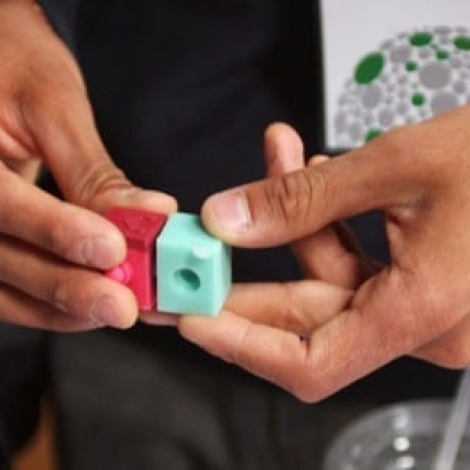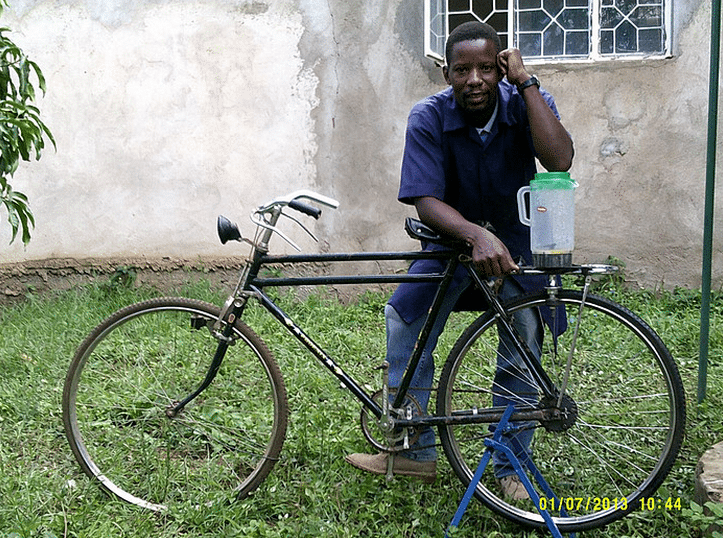Self-service could be the new thing in international development. It’s already the new way to learn something: There are hackers clubs for subjects from robotics to biology, and Maker Faires worldwide have showcased the backyard genius of passionate amateurs.
It may also be the new thing in solving problems in underserved communities. The talented volunteers from developed countries who used to lead development projects abroad are starting to relinquish control. Instead, they are asking how they can serve from the backseat while the beneficiaries themselves take the wheel.
That trend toward local innovation unified the disparate talks at the Better World by Design conference, a student-organized event that ran from October 1 to 3 on the campuses of Brown University and the Rhode Island School of Design. The conference was a riot of ideas. Hundreds of guests from around the world were steeped in inspiration for three days. The surprise, if you can call it that after all the clues we’ve had these past few years, is the by-your-own-bootstraps course that development work is now taking.
“Now we’re seeing less talk about how to design for and sell to emerging markets and more about how to remove barriers to indigenous innovation in those places.” Steve Daniels, one of the event’s founders and a researcher at IBM, told E4C in an email. “That may suggest that there’s a real flaw in the current model of external interventions and we need to be thinking about promoting continuous technological learning at the grassroots in order to promote sustained and relevant industrialization,” he said.
If that’s the case, then E4C is well positioned as a development facilitator. And that may be the case. Matt Sisul argued a similar point in his thoughtful essay on the roles communities should play in leading development projects. Also, projects that seem to work are coming from developing communities and from teams working in tandem with them. We’ve seen that in the staggering talent on display at the last two Maker Faires in Africa.
The distribution of appropriate technologies has been successful when people in the communities take it on as a business. That’s a tack taken by Peter Scott of Rocket Stove. His organization has helped put half a million stoves in African homes.
Two more examples from the weekend stand out. India has a platform that links engineering students to infrastructure projects and problems throughout the country. It’s called Techpedia, a project by Anil Gupta, who founded the Honeybee Network. The overlap with E4C’s goals is obvious, and members of E4C met with Mr. Gupta at the conference to discuss ways to collaborate.
Finally, José Gómez-Márquez, a researcher at MIT’s D-Lab, talked about “MacGuyver docs,” the doctors at rural clinics in developing countries who rig up the equipment they need with the parts available (with the possible exception of the chewing gum that holds together some of the TV character’s gadgets). He’s seen ideas like Coke bottles converted into asthma inhalers, for example. One fantastic idea that came from collaborations with the MacGuyvers: A robotic, modified remote-controlled toy airplane that flies blood samples from rural clinics to city laboratories faster and cheaper than truck delivery. “You have to dust off the shell and sprinkle in some engineering and you have a perfect innovation,” he said.
That’s not to say that the fulcrum of innovation is now in the tropics. It’s everywhere. The conference was a shot-gun blast of ideas and summaries of the meaningful work underway to improve not just economies, but also the global environment. We heard from those who are doing something about global warming right now: Aliza Peleg on how Better Place is electrifying our transportation system, Peter Light on Bloom Energy’s work to improve electricity transmission, Paul Rich on large-scale, offshore US windfarms, Edward Mazria on the need for net-zero carbon buildings, and others.
In that way, a design conference became the latest iteration of the global trend to innovate our own way out of the boxes we’re trapped in: The world is in the grip of a DIY mentality that may yield some lasting solutions.
Local media printed news and summaries of the conference here, and here and this is a list of all of the news and blog coverage, with links.
For more insights by one of the remarkable founders of the Better World by Design conference, please read Steve Daniel’s new book, Making Do: Innovation in Kenya’s informal economy. It’s available as a free download.
India innovates: An amphibian bicycle
This bicycle design highlights a creative idea hatched right in the community that needed it. It was one of the examples that Anil Gupta used in his talk at Better World by Design 2010.
Visit E4C’s Flickr photostream for more images from Better World by Design.

